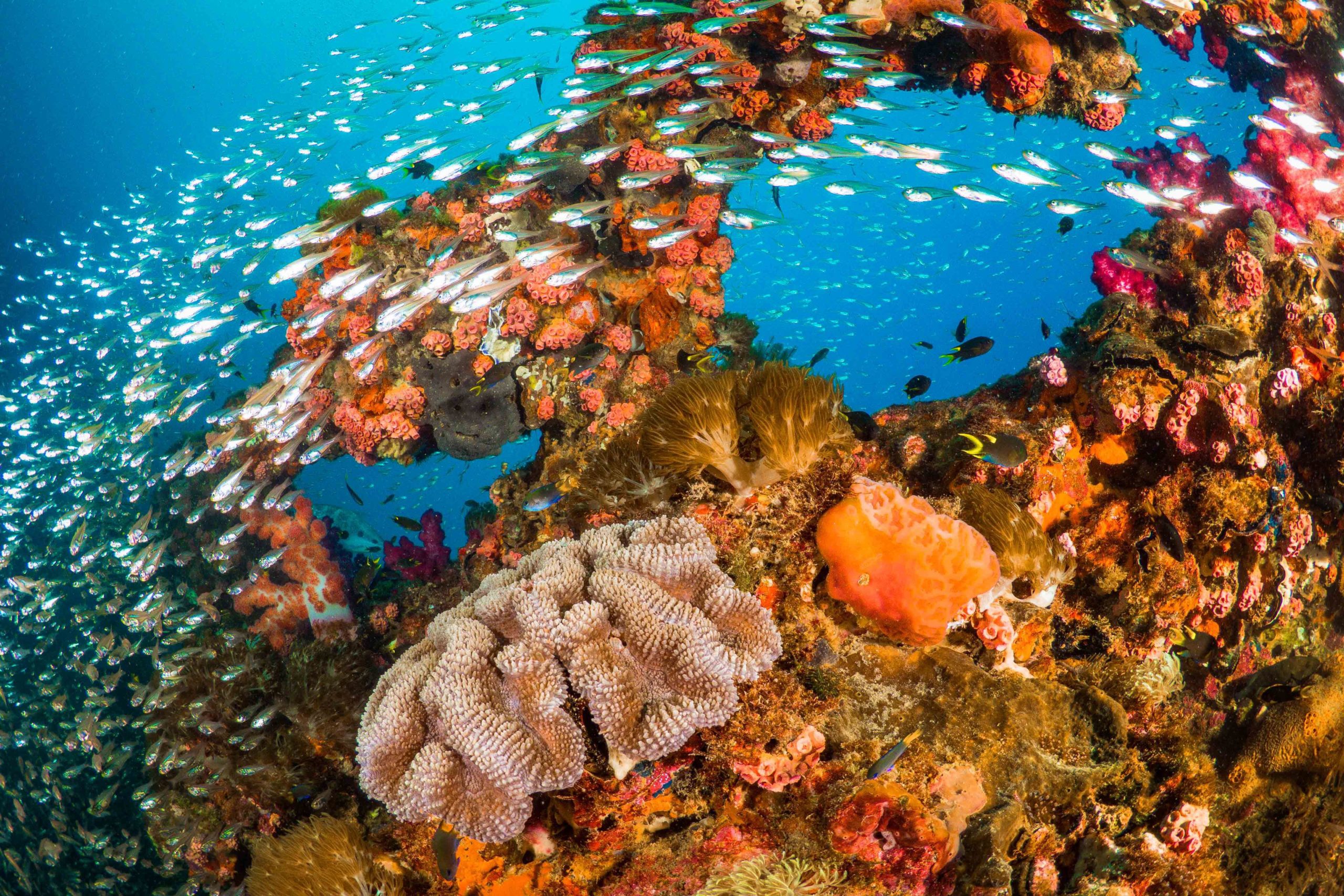
The Birth of Architected Reefs in Sustainable Coastal Protection

Table of Contents
In a groundbreaking initiative, a team from MIT is leading efforts to bolster coastal protection through the development of innovative “architected” reefs. These specially designed offshore structures are crafted to replicate the natural wave-buffering capabilities of coral reefs, offering an effective solution to the growing challenges of coastal erosion and rising sea levels. By mimicking the natural processes of reef formation, these reefs are engineered to absorb and dissipate wave energy, safeguarding shorelines from the destructive forces of oceanic storms and tides.
What sets architected reefs apart is not just their ability to protect the coastlines but also their potential to foster thriving marine ecosystems. The reefs are meticulously designed to provide habitats for marine life, promoting biodiversity and enhancing the resilience of local aquatic environments. This dual-purpose approach — combining coastal defense with marine conservation — has positioned architected reefs as a revolutionary advancement in sustainable coastal protection. As climate change intensifies, these innovative structures offer hope for preserving vulnerable coastlines and supporting the regeneration of marine biodiversity for generations to come.
A Novel Reef Design – The Architected Reefs
The crux of the MIT team’s innovation lies in a cylindrical structure encased by four rudder-like slats, a design that sets it apart from traditional reef structures. Through meticulous experimentation, engineers discovered that this unique configuration is highly effective at dissecting incoming waves into turbulent jets. As the waves pass through the structure, their energy is dispersed, significantly reducing the impact on the coastline. This innovative design not only addresses the challenges of wave energy absorption but also offers a more efficient and sustainable solution for coastal protection.
One of the most remarkable aspects of this new design is its material efficiency. The architected reef boasts a tenfold reduction in material usage compared to conventional artificial reefs, all while maintaining the same level of wave-energy reduction. This breakthrough offers a cost-effective and resource-efficient alternative to traditional reef-building methods, making it a highly attractive solution for large-scale coastal defense projects. By achieving similar protective results with far fewer materials, this innovation offers a sustainable path forward in combating coastal erosion while minimizing environmental impact.
Sustainable Construction
Central to the initiative is the fabrication of each cylindrical structure using sustainable cement, a material that enhances the environmental credentials of the project. These structures are molded in intricate “voxel” patterns, which not only contribute to their strength and durability but also create niches for marine life to explore and settle. The innovative design of these patterns supports biodiversity by providing natural habitats for a range of aquatic species, encouraging the regeneration of local ecosystems.
These architected reefs are envisioned as interconnected units, forming a semi-permeable barrier that can be strategically deployed up to half a mile offshore. This placement allows them to act as a robust defense system against wave impacts, helping to protect vulnerable coastlines from erosion and storm surges. By dispersing wave energy before it reaches the shore, these reefs offer a scalable, eco-friendly solution for coastal protection. Their ability to support marine life while reducing the need for extensive material resources makes them a groundbreaking approach to both environmental conservation and sustainable infrastructure.
Wave Dissipation Efficiency
Pioneering experiments conducted with lab-scale prototypes have yielded promising results. The architected reef has demonstrated the potential to diminish incoming wave energy by over 95 percent. As elaborated by Michael Triantafyllou, the Henry L. and Grace Doherty Professor in Ocean Science and Engineering, the reef’s transformative impact could mitigate erosion and flooding risks significantly.
Scientific Validation
The intricate details of the architected reef design have been meticulously documented in a study published in the open-access journal PNAS Nexus. Collaborating with esteemed researchers and experts, including those from MIT Sea Grant and the Center for Bits and Atoms, the team has navigated through the complexities of hydrodynamics and structural engineering to birth this revolutionary concept.
Leveraging Turbulence for Protection
Unlike conventional artificial reefs, which often rely on massive volumes of materials, architected reefs harness the power of turbulence to efficiently dissipate wave energy. This approach not only ensures coastal protection but also fosters marine biodiversity, offering a sanctuary for fish and other marine organisms along vulnerable coastlines.
Modular and Scalable Solutions
The team’s relentless pursuit of innovation has led to the development of modular and scalable reef structures. Leveraging cutting-edge 3D-printing technologies and sustainable materials, these reefs can be tailored to suit diverse coastal environments. The scalability and ease of installation make them viable solutions for coastal communities worldwide.
Towards Real-world Implementation
With promising results from laboratory tests, the team is poised to transition toward real-world deployment. Collaborations with coastal municipalities in Massachusetts are underway, aiming to pilot these structures on a significant scale. While the upfront costs may be substantial, the long-term benefits in mitigating storm damage underscore the invaluable nature of this endeavor.
A Call to Action
As climate change escalates the frequency and intensity of coastal hazards, initiatives like architected reefs emerge as a beacon of hope. With visionary research backed by scientific rigor, we stand on the brink of a paradigm shift in coastal defense. The journey towards resilient coastlines beckons, and it’s imperative that we embrace innovation and collaboration to safeguard our shores for generations to come.







